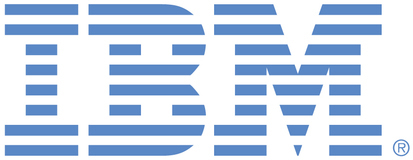
This portal is to open public enhancement requests against IBM Power Systems products, including IBM i. To view all of your ideas submitted to IBM, create and manage groups of Ideas, or create an idea explicitly set to be either visible by all (public) or visible only to you and IBM (private), use the IBM Unified Ideas Portal (https://ideas.ibm.com).
Shape the future of IBM!
We invite you to shape the future of IBM, including product roadmaps, by submitting ideas that matter to you the most. Here's how it works:
Search existing ideas
Start by searching and reviewing ideas and requests to enhance a product or service. Take a look at ideas others have posted, and add a comment, vote, or subscribe to updates on them if they matter to you. If you can't find what you are looking for,
Post your ideas
Post an idea.
Get feedback from the IBM team and other customers to refine your idea.
Follow the idea through the IBM Ideas process.
Specific links you will want to bookmark for future use
Welcome to the IBM Ideas Portal (https://www.ibm.com/ideas) - Use this site to find out additional information and details about the IBM Ideas process and statuses.
IBM Unified Ideas Portal (https://ideas.ibm.com) - Use this site to view all of your ideas, create new ideas for any IBM product, or search for ideas across all of IBM.
ideasibm@us.ibm.com - Use this email to suggest enhancements to the Ideas process or request help from IBM for submitting your Ideas.
Thank you for submitting this request. We assessed the value vs cost of adding the SQL information to the Object Description (OIR) and decided not
to implement the changes.
The CEAC has reviewed this requirement and recommends that IBM view this as a MEDIUM priority requirement that should be addressed. We understand the thought behind this RFE but in it is current form this RFE seem too broad. Perhaps you could request something more specific to address individual elements of this issue
Background: The COMMON Europe Advisory Council (CEAC) members have a broad range of experience in working with small and medium-sized IBM i customers. CEAC has a crucial role in working with IBM i development to help assess the value and impact of individual RFEs on the broader IBM i community and has therefore reviewed your RFE.
To find out how CEAC help to shape the future of IBM i, see CEAC @ ibm.biz/BdYSYj and the article "The Five Hottest IBM i RFEs Of The Quarter" at ibm.biz/BdYSZT
Therese Eaton – CEAC Program Manager, IBM
Paul, internally the object name is stored in a 30-byte area and has been for decades. They've always only exposed the first 10 bytes. But this is more of an "inside baseball" thing.
The CAAC has reviewed this requirement and recommends that IBM view this as a “nice to have” low priority feature. IBM is staging support over multiple releases, and this should be handled as part of that staging.
Background: The COMMON Americas Advisory Council (CAAC) members have a broad range of experience in working with small and medium-sized IBM i customers. CAAC has a key role in working with IBM i development to help assess the value and impact of individual RFEs on the broader IBM i community, and has therefore reviewed your RFE.
For more information about CAAC, see www.common.org/caac
Nancy Uthke-Schmucki - CAAC Program Manager
Completely agree from a design standpoint.
Identifiers should be in the objects (then used by any catalog if one wants).
Object names of 30 bytes ? Am I missing something ?